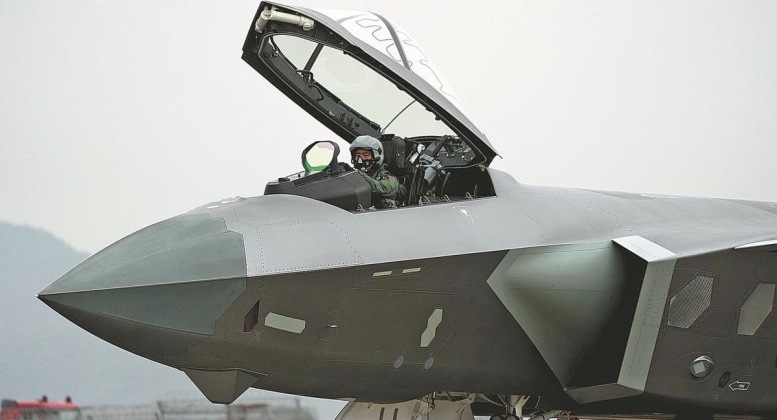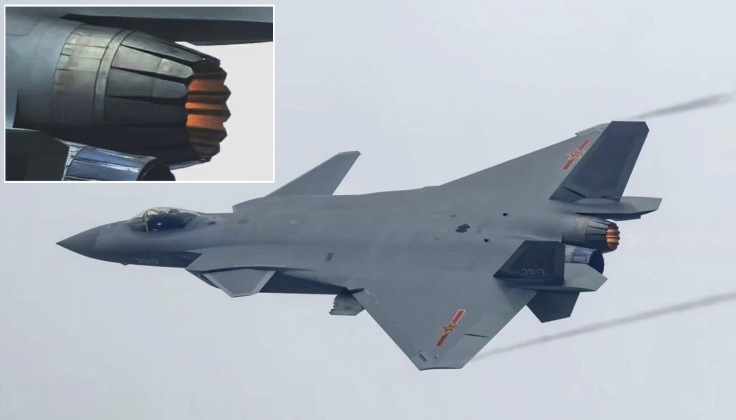The 131st Aviation Brigade of the People’s Liberation Army (PLA) Air Force has reportedly begun using J-20A fighter jets, making it the third unit in the past 12 months to transition to the new fighter after the 8th Aviation Brigade in Northeast China by 20228 In March, the 55th Aviation Brigade was stationed at a central point on the country’s east coast until March 2023. The new unit is the tenth in the Air Force to receive the J-20 as China continues to rapidly expand its fleet of fifth-generation fighter jets, the largest to date outside the United States. It is estimated that there are over 200 J-20s in service today, at a production rate far exceeding that of any other twin-engine fighter in the world, conservatively estimated at over 40 per year, and by many assessments well over 50. The J-20 is one of only two fighter jets of this generation to be deployed at squadron level alongside the US F-35, both seeing rapidly expanding deployments in Northeast Asia, confirming them in the East in March 2022 The first encounter with the China Sea. Unlike the F-35, a single-engine relatively light and low-cost aircraft developed under the Joint Strike Fighter program primarily for air-to-ground missions, the J-20 is a twin-engine heavy air superiority fighter, Optimized for air-to-air combat has higher stamina and carries larger sensors and more weapons.

The 131st Aviation Brigade is expected to be one of the last units to receive the newly produced J-20A fighter jets, which entered production in 2019 and began deliveries to the Air Force two years later with several improvements, including Enhanced stealth capabilities and integration of indigenous WS-10C engines. The WS-10C allows the fighter to fly at supersonic speeds — or “supercruise” — without an afterburner — a key requirement for fifth-generation fighters that the F-35 clearly cannot achieve. However, the new production variant of the J-20 is expected to integrate the new WS-15 engine, which reportedly entered series production in April and could enter service in early 2025. WS-15 is expected to revolutionize the capabilities of the J-20, offering higher endurance, improved flight performance in all domains, lower maintenance requirements and operating costs, and greater power for a new generation of sensors or directed energy weapons. Serious consideration is currently being given to developing a new engine for the US F-35, both to partially compensate for the fighter’s vast difference in maneuverability and endurance from the J-20, and because its current engine suffers from serious performance issues and is one of poor usability key cause, and a lack of cooling needed to properly power the aircraft. F-35 engine problems have cost the Pentagon an estimated $38 billion.

The 131st Aviation Brigade of the Air Force is located at the southernmost tip of mainland China. It is not only the best place to defend key southern cities such as Shanghai, Hangzhou, Guangzhou, and Shenzhen, but also the best place to defend important naval facilities located at the southernmost tip of mainland China. near Hainan Island. The most notable of these is the Longpo Naval Base, which is the main hub of Chinese nuclear submarine operations and is therefore very heavily defended. In the event of a Pacific war, the base is expected to be a prime target for Western forces, especially stealth bombers carrying penetrating gravity bombs like the GBU-57, one of the few weapons capable of penetrating some of the Pacific’s base The reinforced part is better. Deploying a brigade of J-20s nearby, which is intensively trained against stealthy targets and is by far the most dangerous aircraft the United States and its allies may face in terms of air superiority capabilities, thus provides an important degree of additional protection. The J-20s under the 131st Aviation Brigade have significantly replaced the J-10C fighters stationed there since 2016, and the brigade was one of the first to receive the new J-10 classes and transition to them from the older J-10As . It represents the fourth aircraft in the transition from the light J-10 to the J-20, which is more than twice its size and has a much larger logistical footprint, but although the J-10C has been considered, its operational One of the most important fighters in the Air Force.

